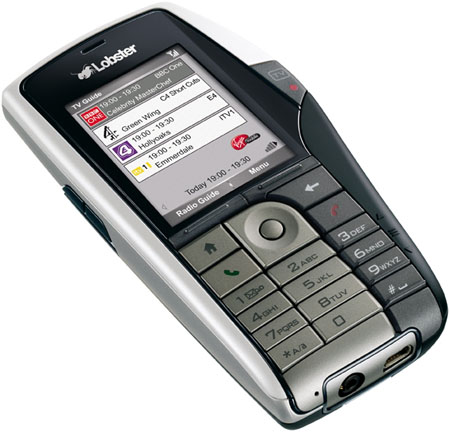Original URL: https://www.theregister.com/2014/05/21/tv_group_seeks_attractive_operators_for_mutual_action_replaysnow/
TV body seeks attractive mobile operators for mutual action replays
Mobile TV? Don't laugh - it might actually work
Posted in Legal, 21st May 2014 12:36 GMT
+Analysis TV on mobiles? Yes, you’ve heard that one before. It’s been one of the most persistent flops of the past fifteen years. But then so were mobile app stores until somebody, Apple, put enough pieces in place to make them work.
Without much fanfare, yesterday saw the launch of a new UK-based initiative, the Mobile Video Alliance (MVA) under the umbrella of DTVG, the digital TV industry standards group.
Founding member EE and its partner, data centre company Equinix, are enthusiastic about the potential.
The group's first task is to make some form of multicast (aka “one to many”) transmission – which is a necessity for efficient IP broadcast streaming – widely accepted.
MVA also plans to establish a testing centre for kit that supports the emerging standards – but stressed it hasn’t yet picked any technology. “They don’t want to choose a technology before they’ve understood the problem,” one source told us at the DTVG’s annual summit yesterday.
Sporting chances
However, one use case we heard sounds eminently plausible. Picture everyone inside a sports stadium able to watch replays of goals – or watch an incident from a different angle. This requires a modest investment in the cells but potentially a big reward. Operators could bundle in the service, while venues could "extend" their physical arena into a larger virtual one. It needs an intelligent network, though. In an intelligent network, the cells in the stadium would detect if more than one user was watching the same stream, then switch to multicast.
American giant Verizon has already demonstrated multicast broadcast over LTE – it calls it LTE Broadcast or LTE Multicast - although it uses its own mutant proprietary extensions to the eMBMS standards. It isn’t clear yet whether eMBMS or new standards will be required. With broadband operators like BT using multicast, the industry knows it needs to catch up.
Matthew Stagg, head of network strategy at EE, told the DGTV Summit that different industries needed to collaborate and share knowledge, which they hadn’t in the past.
“We don’t want to be a standards body like 3GPP,” he said, “but tech silos are doing innovation without understanding the effects for tech silos next door. We don’t understand the roadmaps for [content delivery networks]. You get technologies launched, at the same time, trying to meet the same ends, that make things worse rather than better,” he explained.
“Our customers just want to watch high-quality video; we just want to make sure they get that.”
HDMI was cited as a spec that had succeeded through collaboration. Nor was MVA some Trojan horse sent in to usurp Wi-Fi, said EE. In fact, many network vendors are working on bonding LTE and home Wi-Fi – a sensible thing to do in a near future where video is piped in over IP to lots of screens in a household.
If mobile TV flopped then, why would it work now?

Ugly - who you calling ugly? Virgin's Lobster TV mobile.
A quick recap of the history of mobile TV shows why a low-key launch was wise. Lots of services were launched, but whether the video was delivered using cellular, operator-managed spectrum, or over terrestrial broadcasting spectrum, the outcome was the same – punters stayed away.
The US was first out of the block back in 2004, with Verizon pushing Qualcomm’s MediaFlo multicast technology, which ran over CDMA. AT&T signed up to this, apparently because it had won some spectrum, but never actually launched. MediaFlo was turned off in 2011 and the 700Mhz spectrum was resold.
European operators dabbled with their own answer to MediaFlo, using MBMS standards, but decided not to proceed.
Meanwhile, European bureaucrats got very excited about DVB-H, which used a variation of the DVB-T digital TV standard. Nokia spent a small fortune promoting it, and a huge fortune would have been needed to create a parallel mobile digital TV transmission infrastructure.
But this was a technology where the egg couldn’t roll away from the chicken fast enough, which was legging it in the opposite direction. It never got much support from either handset manufacturers or operators on one side, or punters on the other.
The same could be said of mutant oddities like Virgin’s Lobster, which used DAB radio’s data capacity to stream TV. It was pulled after less than a year, gathering "considerably fewer than 10,000" paying subscriptions.
So why would it be any different this time? Well, technology has improved. But broadcasters and operators now have a different set of incentives. They now have a common enemy: OTT.
OTT (Over the Top) video is the Pacman that destroys the business, giving operators no revenue or customer retention upside, robs them of interesting partnerships, while leaving them with an inefficient, barely manageable mess. They’d much rather manage what flows over their networks.
And lastly, they’re just a bit more sensible these days. For much of the past 15 years, mobile strategists got stoned on visions of replacing TV. For a while, the annual global mobile show, Mobile World Congress, was overrun with greedy and speculative TV and movie reps, believing what the mobile hypesters had sold them. Today, nobody in either industry believes the public wants to watch linear digital TV on a phone.
Yet more modest video services are clearly within reach. I know one Arsenal season ticket holder – who can see both giant screens from his seat – who’d consider switching operators to watch replays.
And while the public clearly doesn't want to watch linear TV on phones most of the time - they do find time-shifting and place-shifting, and "watch it later" to be quite useful.
It’s harder to imagine all this not becoming commonplace in the next decade, really. The hard work is getting everyone else – particularly Apple – to agree. ®